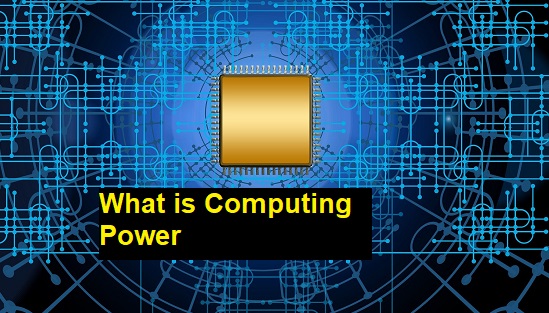
Computing power refers to the ability of a computer system or device to process and perform calculations at high speed and efficiency. It is a measure of the system’s capacity to perform computational tasks, such as running software applications, processing large amounts of data, and executing complex algorithms.
Computing power is determined by several factors, including the type and speed of the processor, the amount and speed of the memory (RAM), the type and capacity of the storage (hard drive, SSD), and the efficiency of the software used to run the system.
As computing power has increased over time, it has enabled more complex and demanding tasks to be performed, such as high-resolution graphics rendering, scientific simulations, and artificial intelligence/machine learning algorithms. In addition, computing power has also led to the development of more sophisticated and powerful devices, such as smartphones, tablets, and wearable devices.
Computing power is often measured in terms of the number of instructions a computer can execute per second, or its floating-point operations per second (FLOPS) for scientific and technical computing. This measure is often expressed in gigaflops (billions of floating-point operations per second) or teraflops (trillions of floating-point operations per second).
The computing power of a system can be improved by upgrading its hardware components, such as the processor, memory, and storage, or by optimizing its software and algorithms to run more efficiently. This can involve using parallel processing techniques, optimizing code for specific hardware architectures, or using specialized hardware accelerators like graphics processing units (GPUs) or field-programmable gate arrays (FPGAs).
Advancements in computing power have enabled significant advances in fields like artificial intelligence, data science, and scientific research. For example, machine learning algorithms can process massive datasets and make complex predictions in real-time, while simulations can model the behavior of complex systems like climate, physics, or biology.
In summary, computing power refers to the ability of a computer system or device to perform calculations and process information at high speed and efficiency, which has enabled the development of more powerful devices and software applications, as well as scientific and technical advances in many fields.
Some point
Sure, here are some key points related to computing power:
- Computing power refers to the ability of a computer system or device to perform calculations and process information at high speed and efficiency.
- It is often measured in terms of the number of instructions a computer can execute per second, or its floating-point operations per second (FLOPS) for scientific and technical computing.
- Computing power is determined by several factors, including the type and speed of the processor, the amount and speed of the memory (RAM), the type and capacity of the storage (hard drive, SSD), and the efficiency of the software used to run the system.
- Advances in computing power have enabled significant progress in fields like artificial intelligence, data science, and scientific research, allowing for the processing of massive datasets and the modeling of complex systems.
- Improving computing power can involve upgrading hardware components, optimizing software and algorithms, or using specialized hardware accelerators like GPUs or FPGAs.
- As computing power has increased over time, it has enabled the development of more sophisticated and powerful devices, such as smartphones, tablets, and wearable devices, as well as more complex and demanding software applications.